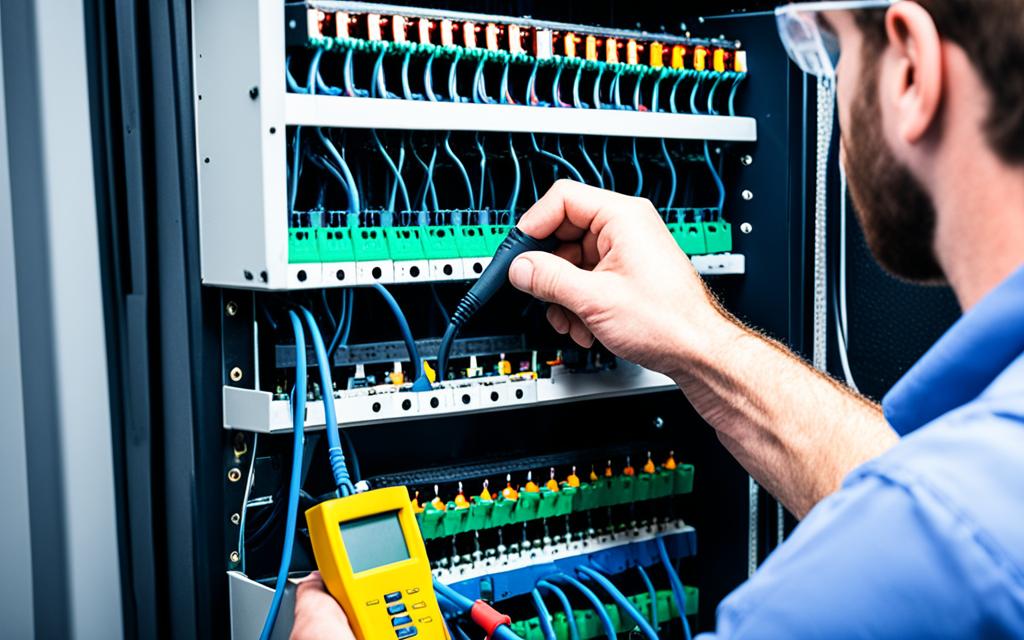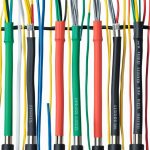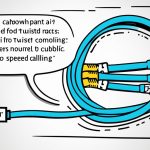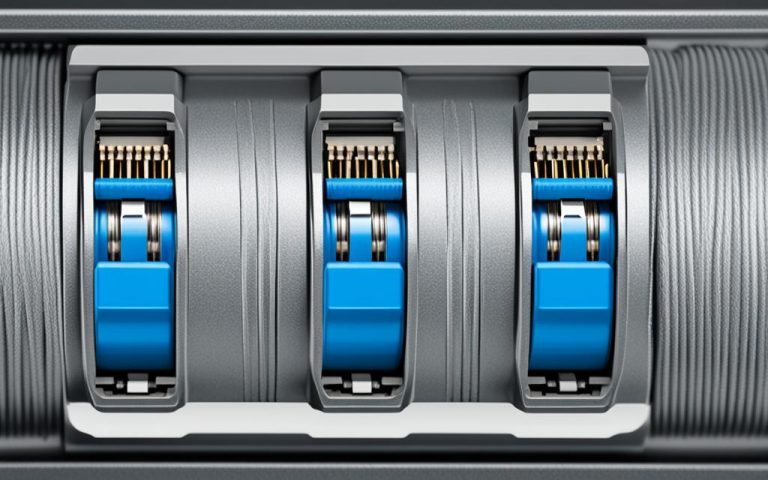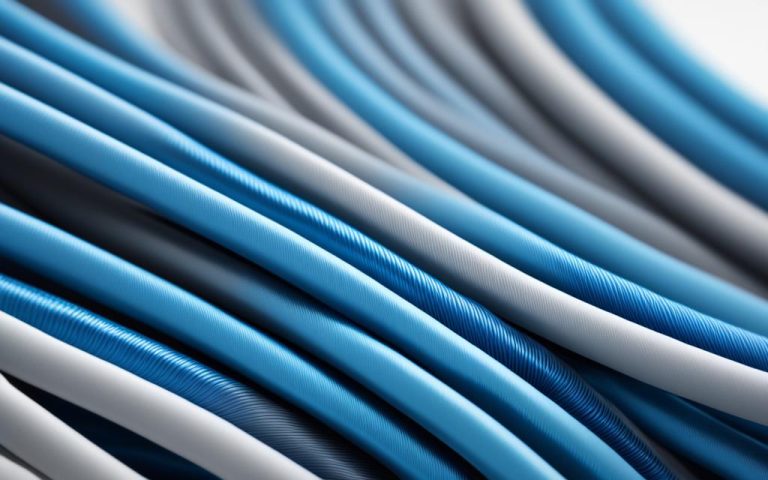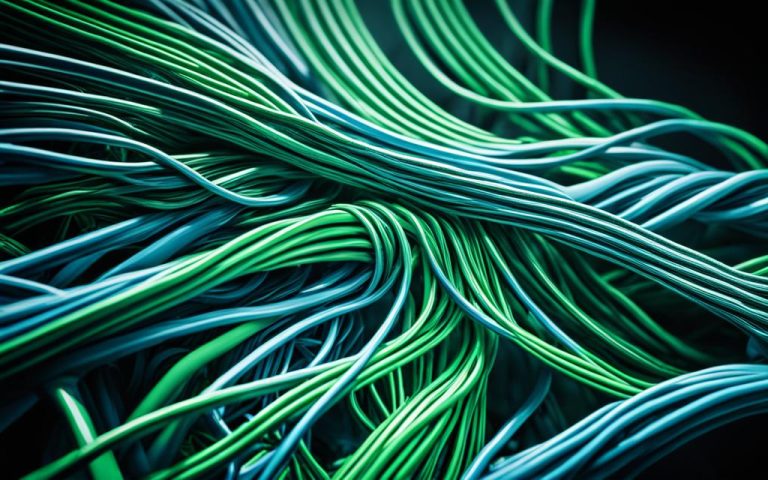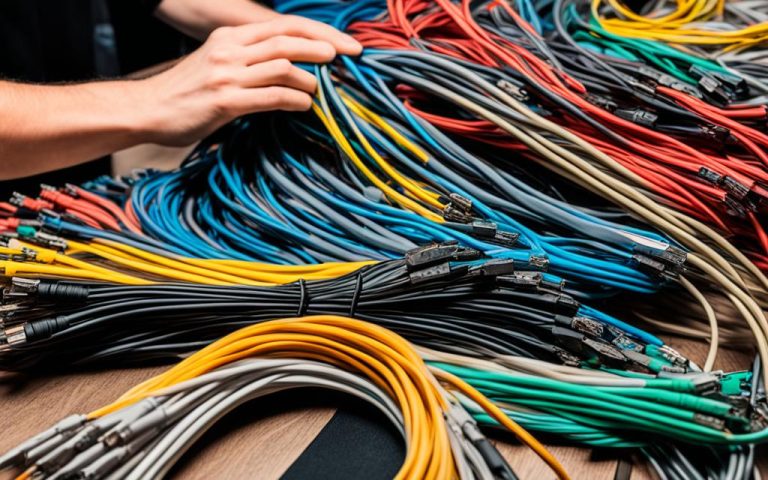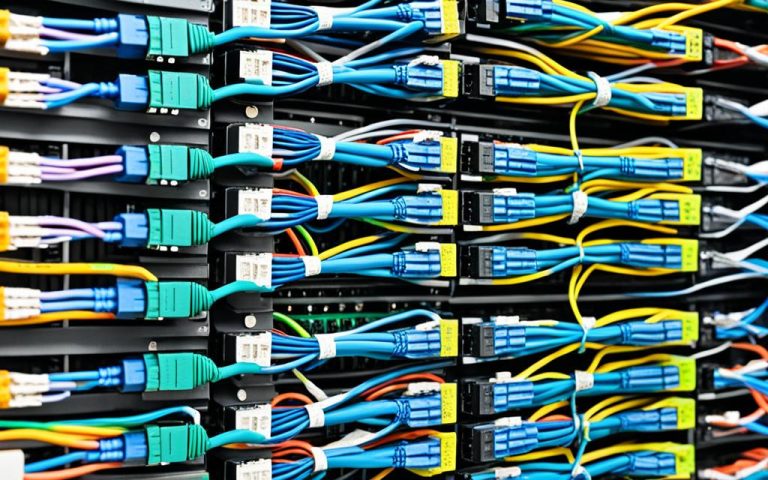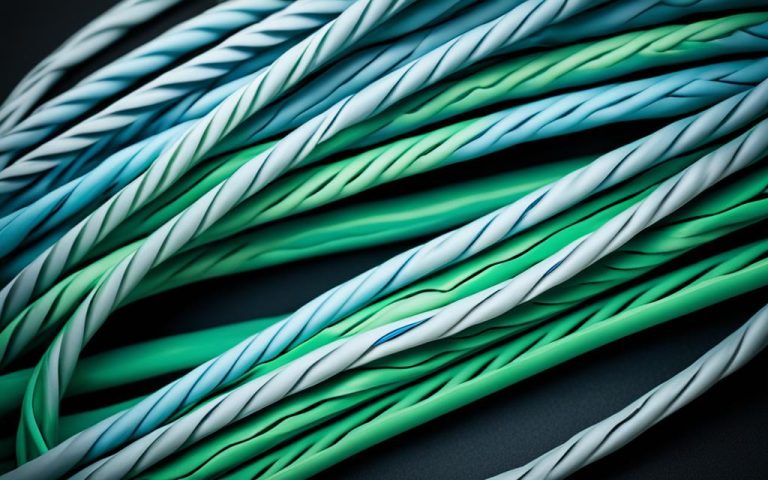Testing twisted pair cables is crucial for ensuring optimal network performance and reliable connectivity. As twisted pair cables are widely used in network installations to minimize cross-talk and ensure clean signals, it’s important to follow best practices to identify and address potential issues.
By conducting thorough testing, you can optimize network performance and guarantee smooth connectivity for various applications that rely on twisted pair cabling. This article will provide valuable insights into the best practices for testing twisted pair cables, ensuring a high-quality network infrastructure.
Understanding Twisted Pairs and Cross-Talk
Twisted pairs are a fundamental component of cable networks, designed to minimize cross-talk and ensure reliable signal transmission. Cross-talk refers to the interference caused when signals from one wire interfere with neighboring wires. This interference is primarily due to the magnetic field changes generated by electrical currents.
The ingenious solution to mitigate cross-talk lies in the construction of twisted pairs. Twisted pairs consist of two wires wound together in a helical pattern. This winding helps reduce cross-talk by sending signals in such a way that when one wire becomes positive, the other wire becomes negative by the same amount. Essentially, the twisting ensures that the currents induced by external sources cancel each other out, resulting in cleaner signals.
Cross-talk is more likely to occur in longer cable lengths and with higher-frequency signals. This is due to the increased opportunity for electromagnetic interference to affect the neighboring wires. Therefore, the proper design and installation of twisted pairs play a vital role in reducing cross-talk and ensuring optimal network performance.
Minimizing Interference with Cable Insulation
In addition to the twisting of wires, cable insulation also plays a crucial role in minimizing interference. Insulation provides a physical barrier between the wires, preventing signals from “jumping” between them and further decreasing the potential for cross-talk.
The quality and thickness of the cable insulation directly impact its effectiveness in mitigating interference. Thicker insulation provides better protection against external electromagnetic fields and reduces the chances of cross-talk occurring.
Benefits of Twisted Pairs
The use of twisted pairs offers several key benefits:
- Improved Signal Quality: Twisted pairs minimize cross-talk, resulting in cleaner signals and improved signal quality.
- Enhanced Data Transmission: By reducing interference, twisted pairs enable faster and more reliable data transmission.
- Compatibility: Twisted pair cables are widely used and compatible with various network devices, making them a versatile choice for networking installations.
“Twisted pairs are a key component of modern networking installations, providing enhanced signal quality and reliable data transmission. Through their unique design and construction, twisted pairs minimize cross-talk and interference, ensuring optimal network performance.”
Understanding the principles of twisted pairs and cross-talk is essential for anyone involved in cable network installations. By leveraging the benefits of twisted pairs and implementing proper cable insulation, network professionals can ensure reliable and high-performance connectivity.
Identifying Split Pair Errors
When it comes to testing twisted pair cables, identifying split pair errors is crucial to ensure optimal performance and avoid cross-talk problems. While conventional continuity tests are useful for basic connectivity checks, they are unable to detect split pair errors which can have a significant impact on the cable’s performance.
A split pair error occurs when one wire from different pairs is swapped identically on both ends of the cable, disrupting the intended signal flow.
To effectively identify split pair errors and address potential cross-talk problems, specialized testing methods are required. These methods go beyond simple continuity tests and examine the individual wire pairs in detail.
By using advanced testing techniques and equipment, network professionals can ensure that cables meet the specified data rates and deliver reliable performance. These methods help identify any split pair errors that may be present and rectify them before they cause significant disruptions.
To visualize the impact of split pair errors and understand the importance of identifying them, consider the following table:
| Scenario | Description | Consequences |
|---|---|---|
| Split pair error | One wire from different pairs is swapped identically on both ends of the cable | Significant cross-talk problems and decreased cable performance |
| No split pair error | Wires within each pair are correctly connected on both ends of the cable | Optimal cable performance with minimal cross-talk |
By understanding the nuances of split pair errors and utilizing specialized testing methods, network professionals can ensure the integrity and performance of twisted pair cable networks.
Tips for Testing Twisted Pairs
Testing twisted pairs can be challenging, especially when dealing with short or poor-quality cables. To compensate for these limitations and ensure accurate results, there are several tips you can follow:
- Utilize Short Interface Cables: When testing twisted pairs, using short interface cables can help minimize signal loss and interference. The total length of interface cables should be less than 1/3 of the total length of the cable under test. If longer interface cables are unavoidable, individual coaxial cables can be used to connect the tested points, providing better signal integrity.
- Account for Poor-Quality Cabling: Poor-quality cabling can significantly affect testing outcomes. To compensate for this, it’s crucial to adjust for the quality of the cables being tested. This can involve increasing the length of the cables during testing or adding specific components like repeaters or amplifiers to enhance the signal and mitigate the impact of poor-quality cabling.
- Consider Coaxial Cables: In situations where short interface cables or poor-quality cables are not sufficient, using coaxial cables can be an effective alternative. Coaxial cables provide better shielding and can help minimize signal loss and interference, making them suitable for compensating for limitations in twisted pair testing.
By implementing these tips, you can overcome the challenges posed by short or poor-quality cabling and ensure reliable results when testing twisted pairs. Taking these measures will enhance accuracy and minimize potential issues in network performance and connectivity.
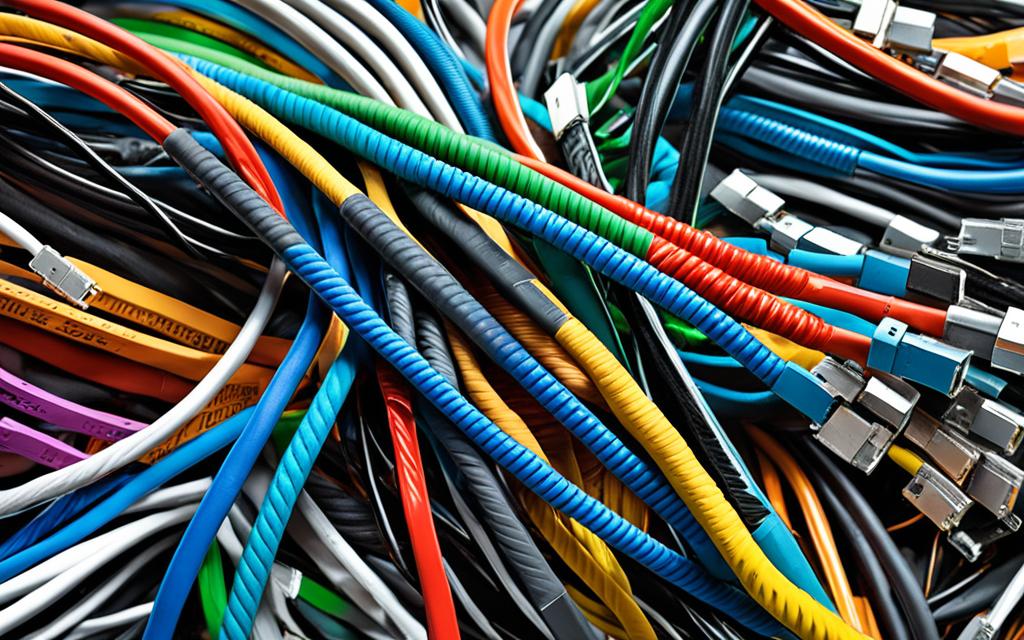
Twisted Pair Testing with Cirris Testers
Certain Cirris testers, such as the CH2, Easy-Touch® Pro, and 4250, offer specialized twisted pair testing capabilities. These testers are designed to measure cross-talk and help identify split pair errors by checking that specific wires behave as twisted pairs. By utilizing these Cirris testers, you can ensure the reliability and performance of your twisted pair cables.
During the testing process, cross-talk measurements are taken to determine the level of interference between adjacent wires. This is crucial for assessing the quality of the cable and identifying potential issues that may impact data transmission. Additionally, split pair detection functionality allows the testers to verify if the wires are correctly paired throughout the cable’s length.
It’s important to note that twisted pair testing with Cirris testers does not replace the need for CAT5, CAT6, or other RF testing and performance certifications. While Cirris testers excel at twisted pair testing, additional instruments are needed to assess performance characteristics such as propagation, impedance, frequency, and packet loss.
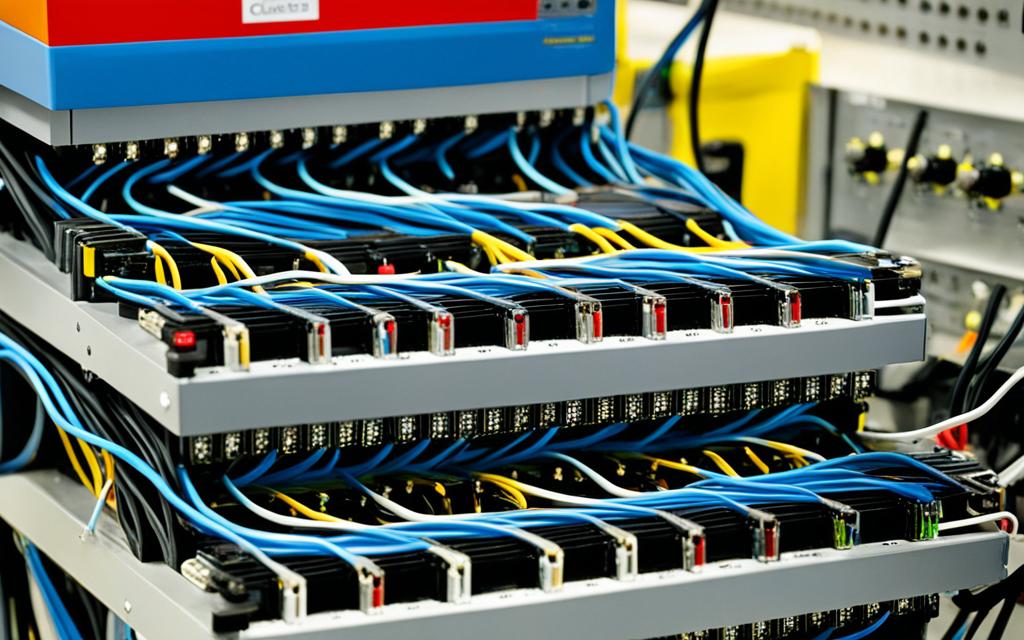
The image above showcases the versatile Cirris testers available for twisted pair testing, enabling accurate and reliable measurements.
The CH2, Easy-Touch® Pro, and 4250 Cirris testers provide comprehensive capabilities for twisted pair testing, including cross-talk measurement and split pair detection.
To summarize, incorporating Cirris testers into your testing process ensures that your twisted pair cables meet industry standards and perform optimally. By identifying cross-talk and split pair errors, these testers play a vital role in maintaining the integrity and reliability of your network infrastructure.
| Cirris Tester Models | Testing Capabilities |
|---|---|
| CH2 | – Cross-talk measurement – Split pair detection |
| Easy-Touch® Pro | – Cross-talk measurement – Split pair detection |
| 4250 | – Cross-talk measurement – Split pair detection |
Approved Testers and Standards for Twisted Pair Cable Testing
When it comes to twisted pair cable testing, it’s crucial to use approved and calibrated testers that meet the latest standards. Testers like the Fluke DSX 5000, Lantek III, and WireXpert 4500 are commonly approved for Class FA (Category 7A) and below, including EA (Category 6A) cables. Firmware updates should be applied to ensure the tester’s performance aligns with the current standards. Compliance testing should be conducted based on applicable standards like ISO/IEC 11801-x, AS/NZS 11801.1, and ANSI/TIA 568.1-D.
Twisted pair cable testing requires the use of reliable, precision instruments to accurately assess network performance and ensure compliance with industry standards. The following table compares the features and capabilities of popular testers:
| Tester Model | Approved Cable Categories | Key Features |
|---|---|---|
| Fluke DSX 5000 | Class FA (Category 7A) and below | – Advanced diagnostics – TIA-568 graphical connector pinout – In-depth analysis of test results |
| Lantek III | Class FA (Category 7A) and below | – Dual Control System for accuracy – 10 Gigabit Ethernet support – Comprehensive compatibility |
| WireXpert 4500 | Class FA (Category 7A) and below | – Intuitive user interface – Automatic test plan generation – Wide frequency range |
Image:
These testers provide the necessary functionality to perform a range of tests, including cable length measurement, attenuation, NEXT (near-end crosstalk), and FEXT (far-end crosstalk) measurements, as well as split pair detection. They are designed to meet the stringent requirements of compliance testing, ensuring that networks adhere to industry standards and deliver consistent performance.
It’s important to keep the firmware of the testers up to date to ensure accurate and reliable results. Firmware updates often include bug fixes, performance enhancements, and support for new features. By regularly updating the firmware, testers can be aligned with the latest standards and address any known issues or limitations.
Compliance testing should be conducted based on applicable standards such as ISO/IEC 11801-x, AS/NZS 11801.1, and ANSI/TIA 568.1-D. These standards define the technical requirements for structured cabling systems and ensure compatibility, performance, and reliability.
By using approved testers and adhering to testing standards, network professionals can confidently verify the quality and performance of twisted pair cable installations. This ensures that networks operate at their peak potential, providing reliable connectivity and minimizing the risk of performance issues or downtime.
Conclusion
Testing practices play a crucial role in ensuring reliable network performance and connectivity assurance for twisted pair cables. By implementing best practices, such as using approved testers, compensating for limitations, and checking for split pair errors, network professionals can identify and address potential issues proactively. This approach leads to optimized network performance and smooth connectivity, supporting various applications that rely on twisted pair cabling.
To maintain a high-quality network infrastructure, regular testing is essential. Adhering to industry standards and guidelines, such as those set by ISO/IEC and ANSI/TIA, helps ensure conformity and compatibility. Using approved and calibrated testers like Fluke DSX 5000, Lantek III, and WireXpert 4500 adds another layer of reliability to the testing process.
By focusing on testing practices and continuous improvement, organizations can confidently rely on twisted pair cables, knowing that they meet the required standards. With a reliable network, businesses can enhance their productivity, efficiency, and overall performance, enabling seamless communication and data transfer.
FAQ
What are twisted pair cables used for?
Twisted pair cables are commonly used in network installations to minimize cross-talk and ensure clean signals.
How do twisted pairs minimize cross-talk?
Twisted pairs consist of two wires wound together to minimize cross-talk. When one wire becomes positive, the other wire becomes negative by the same amount, eliminating or minimizing the effects of cross-talk.
What are split pair errors?
Split pair errors occur when one wire from each of two different pairs gets swapped identically on both ends of the cable. This can lead to serious cross-talk problems and impact the cable’s performance.
How can split pair errors be detected?
Conventional continuity tests may not detect split pair errors. Specialized testing methods are required to identify split pair errors and ensure that cables meet the specified data rates.
How can I compensate for short or poor-quality twisted pair cables during testing?
To compensate for limitations, you can use short interface cables or coaxial cables. The total length of interface cables should be less than 1/3 of the total length of the cable under test.
Can I use Cirris testers for twisted pair testing?
Yes, certain Cirris testers, such as the CH2, Easy-Touch® Pro, and 4250, offer specialized twisted pair testing capabilities. These testers can measure cross-talk and help identify split pair errors.
Do Cirris testers substitute CAT5, CAT6, or other RF testing and performance certifications?
No, twisted pair testing with Cirris testers does not substitute CAT5, CAT6, or other RF testing and performance certifications. Additional instruments are required to assess performance characteristics like propagation, impedance, frequency, and packet loss.
What testers should I use for twisted pair cable testing?
It’s crucial to use approved and calibrated testers that meet the latest standards. Testers like the Fluke DSX 5000, Lantek III, and WireXpert 4500 are commonly approved for Class FA (Category 7A) and below, including EA (Category 6A) cables.
What standards should I follow for twisted pair cable testing?
Compliance testing should be conducted based on applicable standards like ISO/IEC 11801-x, AS/NZS 11801.1, and ANSI/TIA 568.1-D.
Why is testing twisted pair cables important?
Testing twisted pair cables is essential for ensuring reliable network performance and connectivity. By following best practices and adhering to standards, potential issues can be identified and addressed, optimizing network performance and ensuring smooth connectivity for various applications.

